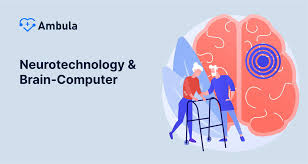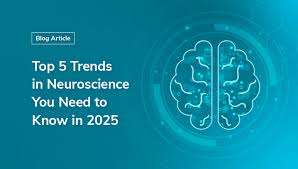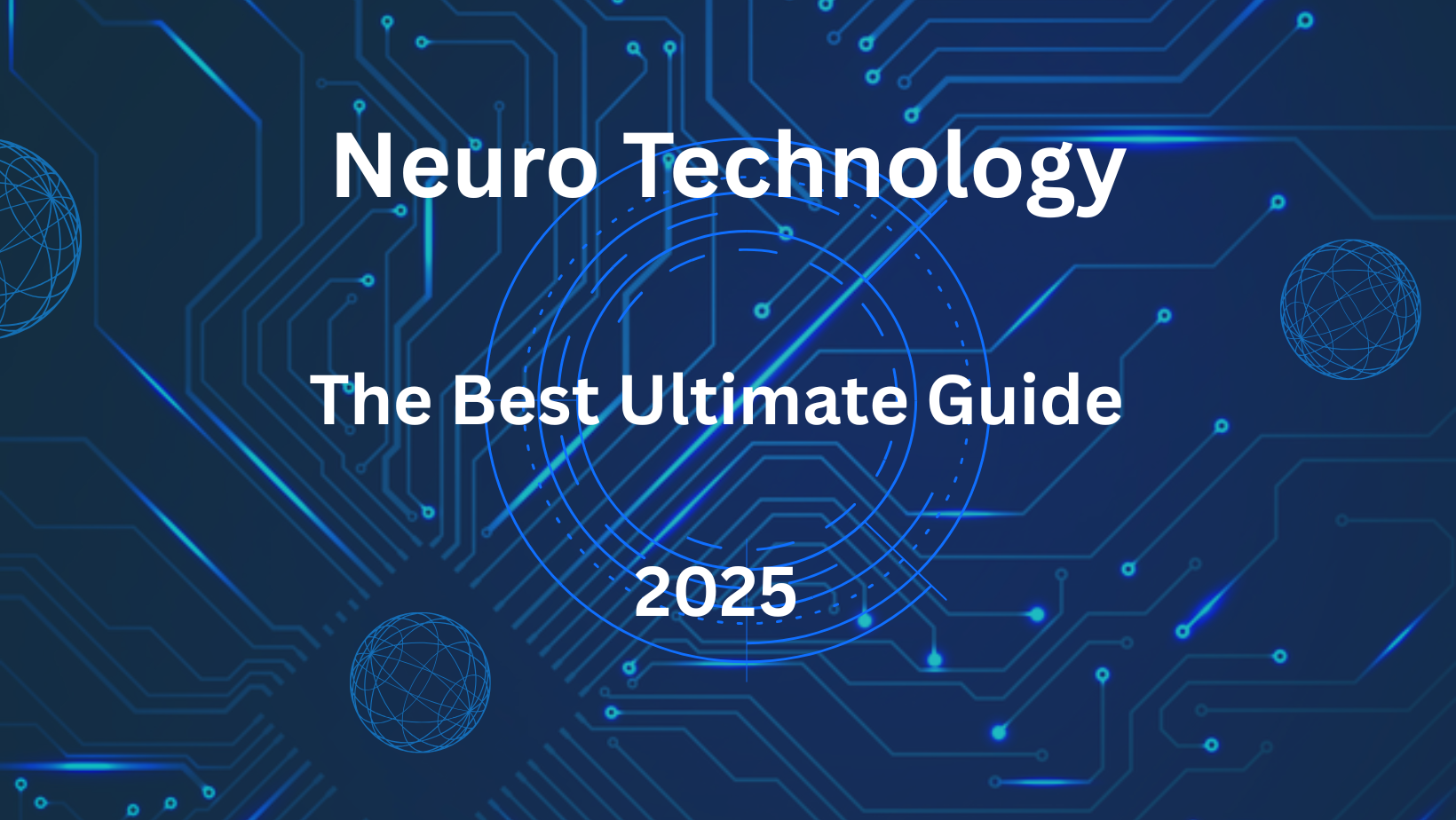Has it ever occurred to you that you could operate your phone simply by thinking about it? Welcome to the exciting and fascinating field of neurotechnology, which is transforming sci-fi dreams into reality more quickly than you can say “brainwave.” The way we interact with machines, treat illnesses, and even enhance our brains is being revolutionized by this innovative fusion of technology and neuroscience.
Children, adults, seniors, and even your eccentric uncle who is still fixated on his flip phone can all benefit from neurotechnology, which includes everything from brain-computer interfaces (BCIs) that allow you to type with your mind to neurofeedback apps that help you relax. We’ll go into great detail about what neuro technology is, how it operates, its revolutionary uses, and why it’s so popular in this 3000-word guide. Let’s take a cerebral journey to discover how neurotechnology is influencing our future, with a dash of humor and a lot of heart. Are you prepared to be astounded? Come on!
What Is Neuro Technology?
Defining Neuro Technology
Neurotechnology, which combines engineering and neuroscience, produces instruments that communicate directly with your nervous system and brain. It’s similar to giving your brain a smartphone so you can communicate with people without typing! Fundamentally, neurotechnology consists of gadgets that track or modify brain activity, such as neural implants, brain-computer interfaces (BCIs), and neurofeedback systems.
Consider it a translator that translates your thoughts into actions, such as manipulating a robotic arm or a cursor. Neurotechnology is for anyone interested in discovering the potential of their brain, not just tech geeks or scientists in lab coats. This technology is opening doors and breaking down barriers, whether you’re a senior trying to maintain your memory or a teenager hoping to play mind games.
How Neuro Technology Works
What is the real mechanism of this brain magic? The electrical signals your brain generates whenever you think, feel, or dream about tacos are used by neurotechnology. Devices like electrodes or sensors applied to your scalp (non-invasive) or, in certain situations, implanted in your brain (invasive) are used to detect these signals, also known as brainwaves.
The technician then decodes these signals using sophisticated algorithms and converts them into machine commands, such as instructing a prosthetic limb to get coffee or a computer to launch Netflix. It’s as though the technology is the speaker that brings your ideas to life, and your brain is the DJ. It’s not perfect, of course; occasionally the tech may misinterpret your “taco” signal as “salad” (the horror!). However, as technology advances, it is becoming frighteningly accurate.
Read more: Ideas & Trends (2024) Neurotechnology – A Double-Edged …
Key Components of Neuro Tech
Let’s break down the magic behind neuro technology with its key building blocks:
-
Electrodes/Sensors: These are the MVPs, picking up brain signals via methods like electroencephalography (EEG) or implanted chips. Non-invasive headsets are common for everyday use, while implants are used in medical settings.
-
Software Algorithms: The brain’s signals are messy, like a toddler’s scribbles. Algorithms clean them up and translate them into usable commands, like “move cursor left” or “play song.”
-
Output Devices: These are the gadgets that act on the brain’s commands—think robotic arms, computers, or even VR headsets that immerse you in a game.
-
Feedback Systems: Some neuro tech, like neurofeedback apps, gives real-time data on your brain activity, helping you train focus or relaxation.
Want to geek out more? Check out our guide to neuroscience basics for a deeper dive into brain signals.
Applications of Neuro Technology
Medical Breakthroughs
Neuro Technology is a superhero in healthcare, saving the day for people with serious conditions. For those with paralysis, BCIs are game-changers, allowing them to control robotic limbs or communicate via text with just their thoughts. A 2023 study from Stanford showed a BCI enabling a paralyzed patient to type 62 words per minute—faster than some of us with thumbs! Deep brain stimulation (DBS) is another star, reducing seizures in epilepsy patients by up to 60% and easing Parkinson’s tremors. Even mental health is getting a boost, with neurofeedback helping kids with ADHD improve focus without popping pills. It’s like giving the brain a personal coach. Curious about health tech? Explore our medical tech advancements blog.
Cognitive Enhancement
I mean, who doesn’t want to know a little more? Neurotechnology can help you improve your cognitive abilities in addition to solving problems. Magnetic pulses are used in transcranial magnetic stimulation (TMS) to stimulate specific brain regions, improving creativity or memory. Imagine your brain receiving a quick zap (don’t worry, it’s painless!) and then performing flawlessly on an exam or in a work presentation.
By displaying real-time brainwave data, neurofeedback applications such as Brain.fm and Muse help you learn how to focus or relax. They are ideal for adults balancing Zoom calls or students studying for tests. 25% of professionals are interested in neuro tech for productivity, according to a 2024 survey. Are you looking for brain hacks? Check out our tips for improving cognitive function.
Entertainment and Gaming
Get ready, gamers—neurotechnology is elevating entertainment to a whole new level. Players can now use their thoughts to control environments or characters thanks to brain-computer interfaces. Businesses such as Neurable are developing headsets that simulate being in the Matrix while playing virtual reality games. Imagine that a single “shoot” thought eliminates the zombies you are fighting. Just your brain, no keyboard or joystick. With neurotech startups raising $500 million in 2024, the gaming industry is fully committed. Immersion experiences are not limited to children; adults and seniors can also take advantage of them. For the most recent information, visit our VR tech blog.
Education and Learning
Classrooms are also being disrupted by Neuro Technology. Neurofeedback can help children with learning disabilities focus better and cope with the stress of school. Teens can engage in hands-on STEM activities with BCIs, such as mentally operating drones or coding apps. It’s not only useful; it’s also really awesome, motivating the upcoming generation of creative thinkers. In order to better tailor their lessons and monitor student engagement, educators are utilizing neurotechnology. According to a 2025 study, schools that implemented neurofeedback reported a 15% increase in student focus. Are you curious? Check out our guide to education technology.

Benefits for All Age Groups
Kids and Teens
For young brains, neurotechnology is like a playground. Neurofeedback devices function similarly to video games in helping children with dyslexia or ADHD develop their reading and focus skills. Talk about a science fair victory for teens who can geek out with BCIs, coding apps, or mind-control robots! Additionally, these resources pique curiosity and add excitement to STEM education. Parents, picture your teenager saying, “Today, I used my brain to create an app!” It’s more than just enjoyment; it’s developing abilities for a tech-driven future. Additionally, it is entertaining and safe for younger users.
Adults
For adults, Neuro Technology is a secret weapon for conquering life’s chaos. Whether you’re a parent juggling soccer practice or a professional chasing deadlines, tools like TMS can reduce stress and sharpen decision-making. BCIs are creeping into workplaces, helping with tasks like data analysis or remote robot control. A 2024 survey found 30% of tech workers want neuro tech for productivity. Picture this: you’re analyzing spreadsheets faster because your brain’s directly plugged into the system. Sound cool? Check our productivity hacks for more.
Seniors
Because of neurotechnology, aging does not equate to slowing down. Seniors can prevent cognitive decline and maintain their memory by using brain-training apps and neural implants. Neurofeedback, for instance, has demonstrated promise in reducing dementia symptoms and allowing seniors to spend more time with their loved ones. BCIs can also be used to control smart home appliances, such as thermostats or lights, with a simple thought, which simplifies daily tasks. For the brain, it’s like a fountain of youth! See our senior tech guide for more information.
Challenges in Neuro Technology
Ethical Concerns
Although neurotechnology is fantastic, it has drawbacks. A major worry is privacy—what if your brain data is compromised? Even M. Night Shyamalan couldn’t have imagined that plot twist. Fairness is another concern: will only the wealthy have access to brain-boosting technology? Ethicists are struggling with consent issues, particularly when it comes to children or elderly people who use neurotechnology. Concerns regarding identity and autonomy if brains are overly linked to machines were brought up in a 2025 Vox article. To ensure that neurotechnology is safe and equitable for all, we need clear regulations.
Technical Limitations
Let’s be real—neuro technology isn’t perfect. Some BCIs look like a sci-fi experiment gone wrong, with bulky headsets or wires galore. Accuracy is another hurdle; misread signals can lead to errors, like your robotic arm waving when you meant to grab a snack. Battery life is a pain, too—nobody wants their brain tech dying mid-task. Plus, invasive devices like implants require surgery, which isn’t exactly a walk in the park. Researchers are working on sleeker, more reliable solutions, but we’re not quite there yet.
Accessibility and Cost
Here’s the kicker: neuro technology can be pricey. A high-end BCI can cost $10,000, while even basic neurofeedback apps run $50–$200. That’s a tough pill to swallow for many families. Accessibility is also an issue—rural areas or low-income communities often lack access to cutting-edge clinics or devices. But there’s hope: companies are developing cheaper, user-friendly options, and insurance is starting to cover some medical neuro tech. Stay in the loop with our tech trends blog.
Read more: A Neuroscientist’s Guide to Reclaiming Your Brain
The Future of Neuro Technology
Emerging Trends
Neuro Technology has a more promising future than a supernova. Experts estimate that by 2030, BCIs will be as widely used as smartwatches and have uses in social media, healthcare, and education. Think of tweeting your ideas or quickly scrolling through X! Startups are raising billions to bring neuro tech to the masses, and non-invasive headsets are becoming more streamlined. According to a TechCrunch report from 2025, the neurotech market is expected to reach $20 billion by 2030. This technology is going to change the way we live in boardrooms and classrooms.
Neuro Tech and AI
The best friend of neurotechnology is artificial intelligence. BCIs are becoming smarter thanks to AI algorithms, which can decode brain signals more quickly and precisely. Dreaming big, companies like Neura Link want to create superhuman intelligence by fusing AI and human brains. It may sound like a sci-fi blockbuster, but it’s actually quite close. Neurotechnology driven by AI may help seniors maintain their mental acuity, professionals work more efficiently, and students learn more quickly. There are countless options, but getting there will require negotiating moral pitfalls.

FAQs About Neuro Technology
What is Neuro Technology used for?
Neuro technology powers medical treatments (e.g., paralysis recovery, epilepsy control), cognitive enhancement (e.g., better focus, creativity), and entertainment (e.g., brain-controlled gaming). It connects brains to machines, offering benefits for kids, adults, and seniors alike.
Is neuro technology safe?
Most neuro tech, like EEG headsets, is safe but not risk-free. Invasive devices like implants carry surgical risks. Privacy is a concern, as brain data could be hacked. Always choose FDA-approved devices and consult professionals.
Can kids use Neuro Technology?
Absolutely! Neurofeedback helps kids with ADHD or learning issues improve focus. BCIs make STEM fun, like coding with thoughts. It’s safe under supervision, sparking creativity and skills for young innovators.
How expensive is Neuro Technology?
Costs range from $50–$200 for neurofeedback apps to $10,000 for advanced BCIs. Medical implants can be pricier. Prices are dropping, and insurance may cover some devices, making neuro tech more accessible.
What’s the future of Neuro Technology?
By 2030, neuro tech could be as common as smartphones, with BCIs for work, gaming, and healthcare. AI integration will boost accuracy, making it a game-changer for all ages. The market is set to soar.
Read more: Best Cybersecurity Tips Everyone Should Know 2025
Conclusion
Neurotechnology is here and changing people of all ages; it is no longer a sci-fi dream. This intelligent technology is pushing the envelope in a variety of ways, from empowering seniors with sharper minds to helping children overcome ADHD. Mind-blowing gaming, cognitive enhancements, and medical advancements are only the beginning. The future is bright, with AI and innovation propelling neurotechnology to new heights despite obstacles like costs and ethics. There is something for everyone, whether you’re an adult looking for productivity tips or a teenager dreaming of brain-controlled drones.

